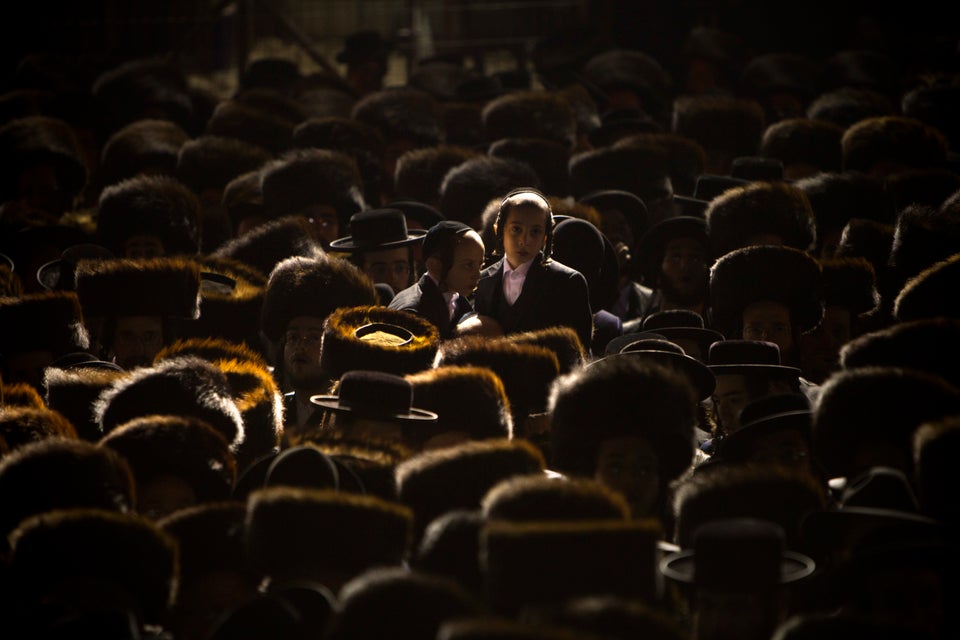
Whenever we used to watch a movie, my sister and I would play a game: "Spot the Jewish Reference" would have been the game's title, had we given it one. In just about every movie, there was at least one Jewish character who loved matzah ball soup, or at least one Hasid walking in a busy street. But looking back on all these brief references -- or not so brief, if the movie involved Adam Sandler -- I realized there really is no medium to those extremes. Jews, as portrayed by Hollywood, are either purely cultural, putting a symbolic Star of David up on their Christmas trees, or exceptionally religious, to the extent that their English is tinged with a shtetl-like Yiddish accent. Never once is there a young woman wearing pants and praying on her iPhone, as I do every morning on my way to work. The Modern Orthodox Jew is not a universal icon the way a Hasid is. In fact, Modern Orthodoxy is a concept that doesn't seem to exist at all.
To the world at large, Orthodox Jew equals a streimel, long curly peyot and backwards thinking. Anything less is simply "Jewish," like gefilte fish or tiny Eastern-European bubbes. And this can't be written off as a strictly Hollywood fabrication, along with other movie-isms, like lipstick that never seems to wipe off. This is a misconception across all media. From television shows to newspaper articles of the highest caliber, Orthodoxy is presented as a homogenous group, where all women are subservient and all men are rabbis. In reality, Orthodox Judaism is a term that can apply to everyone from the girl in the pants, studying philosophy at a top university to the teenage bride in her long sleeves and long skirt, meeting her husband for the first time at the wedding. There are complicated differences between the multiple groups within the larger Orthodox denomination, making any references to the Orthodox as a whole bound to be inapplicable to all the factions.
It's not necessarily fair to assume that the average layperson, or even journalist, should be well versed in the intricacies of Jewish politics and ideologies, let alone the Orthodox complexities. But when an article is written by a Jew, as was the case with a recent article in Harvard's The Crimson, "The Hillel Problem," an article which piqued my irritation of the wider portrayal of Orthodoxy, the problem clearly goes beyond outsider ignorance. If a Jewish student at America's top university doesn't grasp the important nuances of Orthodoxy, how are we to expect that of anyone else?
In this article, Harvard student Daniel J. Solomon reflects on his recent trip to Harvard's Hillel. In the process, he stereotypes just about every form of Judaism -- including his own (Reform or Conservative, the op-ed isn't clear which) -- and says this about Orthodox Judaism: "Some have tried to draw sharp distinctions between the East Ramapo and Williamsburg crowd and the 'Modern Orthodox.' Those differences are cosmetic, not ideological." Why does he decide this to be factual? Because "[t]here's nothing modern about keeping men and women separated at prayer services, or preventing women from singing Torah. There's nothing modern about embracing strict interpretations of Jewish law. There's nothing modern about having an all-Hebrew prayer book."
Aside from the fact that every major Orthodox synagogue I've stepped into has had English-Hebrew prayer books, this paragraph highlights in its ignorance the wider population's understanding of Orthodox Judaism: that there is no spectrum. All Orthodox Jews are ultra-Orthodox. Somehow, Orthodoxy has come to be defined by its more extreme members. Like Muslims who fight to prove that not all who follow Islam wish to kill infidels, I find myself needing to show that I and my community are not the same as those Orthodox you read about in the news, those who hide their women behind barriers constructed from biblical verses and sinful temptations.
It is, perhaps, more newsworthy to make all Orthodox Jews out to be stuck in an ancient tradition, as if every religious Jew is still wearing their zaidy's zaidy's Polish garb. It may be newsworthy, but it's not accurate, and it's not sound journalism. If the media outlets in a city like New York -- where every other street has a kosher restaurant and Hasidim populate entire city blocks, where the Modern Orthodox university, Yeshiva University, is physically located and Modern Orthodoxy booms -- is unable to distinguish between Orthodox and ultra-Orthodox, it's difficult to expect it of anyone else. And yet the ignorance that is shown by misunderstanding the lines is shameful and should not be acceptable in any professional outlets. Not only does it reflect poorly on the author and the entire publication, but it is damaging to the Orthodox communities which are represented. If every Orthodox Jew is lumped together under the black umbrella (or streimel?) of ultra-Orthodoxy, then how is a professional Modern Orthodox businessman to be taken seriously? How will a woman like myself be understood in a larger context? And how can entire communities be recognized for their efforts to pull away from the insulation of ultra-Orthodoxy to participate in the progress of a larger community, like the nations in which they live?
Yes, it's true that in my synagogue the men and women sit separately. The men lead the prayers and "sing" the Torah. We, the Modern Orthodox (a term that itself is too wide to be easily defined, and is based more on one's own profession of belonging to the group than any other boundary), adhere to a "strict" interpretation of Jewish law. As believers in a God-given Torah, believers in rabbinic authority and tradition's importance, we see no logical reason to disregard Jewish law as ancient or outdated. And yet I would be hard-pressed to find a student at Yeshiva University, my college and the self-proclaimed flagship of Modern Orthodoxy, who would be comfortably identified as only "cosmetically" different than the Williamsburg community. In fact, it would be even more difficult, if not impossible, to find a Williamsburg Hasid who would not angrily denounce Yeshiva University as an improper Jewish institution. The differences between us may seem minute to the outsider, but to us we're as different as Catholic and Protestant.
As a journalist, I know how hard it is to fully understand any single topic, let alone entire communities of intricate ideologies, practices and politics. But reaching outside of our bubbles as individuals is what being human is all about. Until we try to understand others, there will never be able to get along as a society. That sounds extreme, but we truly get to be a more understanding society when we are a more informed society.
